Environmental Transformations and Interactions
Functional and Systems Biology
Innovative Scientific Research, Meaningful Connections All Part of EMSL Postdoc Experience
EMSL celebrates postdoctoral researchers as part of National Postdoc Appreciation Week

EMSL has more than 20 postdoctoral researchers, including Maggie Bowman, Daniel Mejía-Rodríguez, Gregory Vandergrift (top row), Nurum Nahar Lata, and Yen-Chen Liao (bottom row). (Photos by Andrea Starr | Pacific Northwest National Laboratory)
Behind every great scientist are foundational learning experiences that have led them to new discoveries, connections, and breakthroughs.
Through intensive research experiences at the Environmental Molecular Sciences Laboratory (EMSL), postdoctoral researchers have the opportunity to dive deep into hands-on research in the biological, environmental, and computing sciences. They use innovative and state-of-the-art instruments to perform groundbreaking experiments and research while learning from experienced staff researchers that are leaders in their fields.
As part of National Postdoc Appreciation Week this week, EMSL highlights postdoctoral researchers from across the world that have come to EMSL to complete research in atmospheric sciences, biogeochemical transformations, computational modeling, proteomics, and more. EMSL employs more than 20 postdoctoral researchers. Check out their journeys in science so far and the impactful connections they have made along the way.
Nurun Nahar Lata | Daniel Mejía-Rodríguez| Gregory Vandergrift | Maggie Bowman | Yen-Chen Liao
Nurun Nahar Lata
Biogeochemical Transformations | Environmental Transformations and Interactions
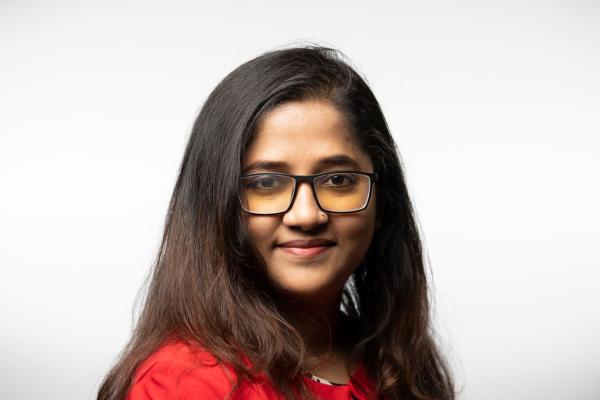
What is your research area?
My research focuses on atmospheric research, and in particular, understanding the processes that occur in the atmosphere regarding aerosols. Aerosol particles are processed in several ways. When they interact with clouds, their physical-chemical properties change. These modified physical-chemical properties affect the climate differently than fresh particles.
In atmospheric research, ice nucleation and cloud formation are not well understood. There is lots of uncertainty in the prediction of ice nucleation because of the chemical modification of particles during atmospheric transport. Moreover, sufficient aerosol chemical composition measurement data is not available for different high-altitude processes. My research will provide vertical distribution of aerosol composition at high altitudes so we can make a relevant connection regarding cloud formation.
Why did you want to become a scientist?
It stems from childhood. When I was in high school, we had to write an essay, “What is your aim in life?” Some people wanted to become an engineer. Others wanted to become a doctor. But my aim in life was becoming a scientist. I wanted to know how everything happens. I wanted to know the underlying truth of everything. I have always had a curious mind.
What big challenge do you hope to tackle during your career?
Currently, one of the challenges in ice nucleation is predicting the number of ice nucleating particles. We want to improve our understanding and prediction of ice nucleating particles that stem from physical-chemical properties of the particles.
How did you come to EMSL/discover EMSL as a postdoc option?
As part of my PhD at Michigan Technological University, I got an opportunity to work at EMSL as a PhD intern. Actually, this experience broadened my interest in this field and made me more motivated to produce this kind of research. When I was an intern, I got opportunities to work on multiple projects regarding aerosols and aerosol ice cloud formation and do hands-on experiments to reveal the properties of atmospheric aerosols. The internship broadened my interest in doing this kind of research.
What university did you join us from?
I completed my undergraduate and master’s degrees from the University of Dhaka in Bangladesh. I then moved to the United States and got my PhD from Michigan Technological University in atmospheric sciences.
What do you enjoy doing in your free time?
I like to go for walks and listen to songs. Those are two things that I do all the time.
Daniel Mejía-Rodríguez
Systems Modeling | Computing, Analytics, and Modeling
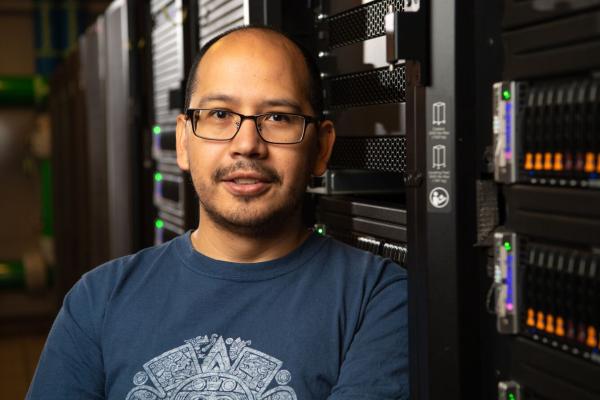
What is your research area?
I work in the systems modeling and computational science group at EMSL. I do computational chemistry and theoretical chemistry. Basically, it is methods development.
Why did you want to be a scientist?
The way I got interested is funny. At the beginning, I didn’t like this part of the chemistry side. I was an experimentalist and working at a lab. But I have always had a thing for challenges. When I started doing my undergraduate studies, I started on some computational work and I didn’t understand what I was doing. I took that as a challenge. So for my PhD, I said “If I want to learn something about computational chemistry, really learn about it, I must dive into it.” So I will go into the theoretical chemistry group, forget about the experimental side, and see what happens. I love it!
What big challenge do you hope to tackle during your career?
Environmental preservation is an important challenge with many possible ramifications. Paradoxically, the scientific endeavor to reduce human impact on the environment is also resource intensive. For example, high-performance computing needs tremendous amounts of power, water, and materials. My scientific career has been focused on developing new approximate methods in order to lower the carbon footprint of scientific discovery and, in principle, enable the accurate simulation of complex systems.
How did you come to EMSL/discover EMSL as a postdoc option?
I have known about EMSL since my undergraduate experience because I used NWChem for my thesis. It was already one of the most recognized quantum chemistry packages in the world. I never thought I could join the team here, but I was doing a postdoc in Florida and I submitted some changes for the platform. I didn’t think they were going to accept them, but Edoardo Apra, who is now my mentor and manager, accepted the changes. I was very surprised. When the pandemic hit back in Florida, I was looking for permanent professorships, but there was a hiring freeze. I reached out to Edoardo and said “Hey, I just want to see if there’s a position at EMSL because I want to develop NWChem.” I think the first answer was “No, we don’t have anything, but I’ll get back to you in a little bit.” He later called and said they had something available. I knew it was the perfect place for me to develop NWChem.
What university did you join us from?
I earned my bachelor’s degree from the Instituto Politénico Nacional in Mexico, and then earned my PhD from Cinvestav, a center for advanced research from the same institute, also in Mexico.
What do you enjoy doing in your free time?
I mostly spend time with my kids and family. I was more active before the pandemic, but we are starting to get to know the Tri-Cities. We love to go to Badger Mountain and hike. My daughter loves dancing. She does ballet and I love to go watch her practice and her recitals.
Gregory Vandergrift
Biogeochemical Transformations | Environmental Transformations and Interactions
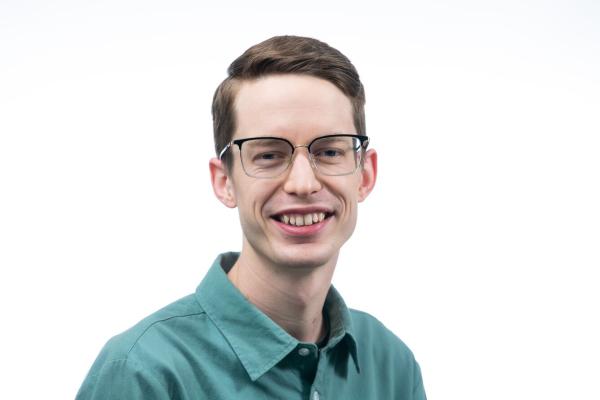
What is your research area?
My overall research focus with respect to atmospheric chemistry is trying to understand the molecular composition of atmospheric aerosols. We have a lot of different ways of describing aerosols. Is it a solid? Is it a liquid? Does it evaporate very easily? Does it condense? But a lot of those physical characteristics have their roots in what they're made out of. We could measure those characteristics directly, or we could try to identify the molecular composition that drives these things. Mass spectrometry is a great way to get at those answers. For example, if we have a wildfire, we collect aerosols. Those aerosols will look very different than what we would collect over an inland agricultural region. Those aerosols will also behave differently in the atmosphere. It'll cause different weather patterns, it might pose different human health risks, and we can understand those all a little bit better in their own way. If we identify the actual individual molecules contributing to these aerosols, we know that we can understand their lifespan.
Why did you want to become a scientist?
I thought I was going to be an NHL hockey player for a little bit, and then it turns out that that wasn't going to happen. But I've always just been fascinated by asking questions. I think the thing that I really enjoy that's central to the profession of the scientist is that there's not really one bulletproof method. I had the privilege of having some really great instructors very early in my undergraduate degree that let me do research as early as a second-year student. I was able to get an appreciation for what research looked like very early.
What big challenge do you hope to tackle during your career?
A lot of the things that we can get at from understanding aerosol composition drive climate change processes, and they drive weather patterns. But weather patterns and climate change aren't isolated issues. They also affect a lot of other deeply connected processes. In a lot of ways, with atmospheric chemistry, if we understand what's driving these processes, we are getting at some of the more fundamental causality. There are atmospheric components stemming from vehicle emissions that we need to curtail to stop certain weather processes from happening. There may be some things that come from biomass burning events that we should be aware of. A lot of these atmospheric processes are driven by the aerosols. So, if we can figure out what the aerosols are made out of, that greatly increases our depth of understanding.
One large thing that I have learned through this postdoc is that in order to come up with the greatest impact science and the most comprehensive answer to any kind of scientific question, it's going to be a multidisciplinary effort. There are a lot of things that I might be able to add with respect to understanding the molecular composition of an aerosol. But the story doesn't necessarily start there, and it certainly doesn't end there, either. The thing that I really appreciate about this position is I get to work with other talented postdocs and other talented researchers who are a lot smarter than me in a lot of different other areas.
How did you come to EMSL/discover EMSL as a postdoc option?
I became aware of the position through LinkedIn. I had applied to several positions at PNNL, and this one ended up being the best fit. That's how I was introduced to Swarup China and Chris Anderson, now my managers and mentors at EMSL.
What university did you join us from?
I completed my undergraduate degree at Vancouver Island University in British Columbia, Canada. From there, I moved a couple of hours south to the University of Victoria, which is also in British Columbia, where I got my PhD.
What do you enjoy doing in your free time?
I have a young family, so I really enjoy spending time with my little baby boy at home. I really enjoy biking. I also really enjoy being outside and music, both playing it and listening to it.
Maggie Bowman
Biogeochemical Transformations | Environmental Transformations and Interactions
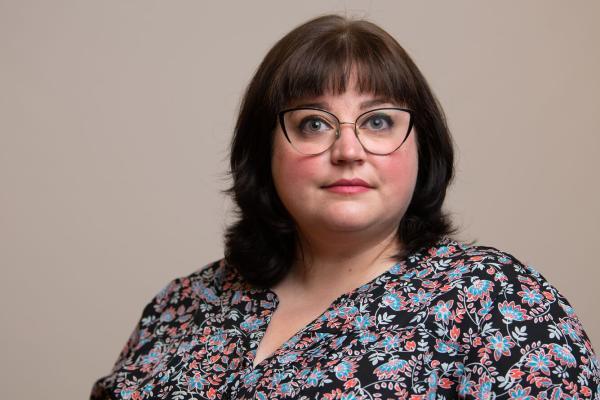
What is your research area?
My specific research interests at EMSL are organic matter composition across different environments or alterations of the environment. Right now, I'm working specifically in soils for the majority of my project, but my long-term goals are to look at the terrestrial–aquatic interface and study how organic matter composition in soils affects the watershed.
Here at EMSL, I was lucky enough to work with Nancy Hess at EMSL before she retired, and one of her last projects was spinning up the 1000 Soils Research Pilot. It is a collaborative project where we seek to analyze soils from across the United States and form an interoperable database of standardized measurements using EMSL’s instrument capabilities. It is a bit of a unique experience for a postdoc because while arguably many postdocs have a lot of smaller projects that result in a lot of papers, this has been a big project over the span of two years where I have helped with the development and launch of the research campaign that features samples from Hawaii to Maine.
Why did you want to become a scientist?
I thought I was going to be an engineer. I thought I was going to be a mechanical, structural engineer, but I didn't love it in college. So I transitioned away from it more into the Earth sciences. I later earned a master's in chemistry and then continued on with my PhD.
What big challenge do you hope to tackle during your career?
What I’m looking forward to as part of my career is linking more computational methods for quantifying organic matter chemistry together with the techniques and skills that EMSL provides. This would involve building proxies that would allow us to use simple, nondestructive measurements that are more accessible to a broader scale of universities or students, as well as create more access from a price point perspective.
How did you come to EMSL/discover EMSL as a postdoc option?
During my PhD, I wanted to work with mass spectrometry, and I had a principal investigator who knew some staff at EMSL—particularly Nancy Hess. She told me to submit a limited-scope proposal, which ended up being selected. I came out to EMSL to prep samples as an EMSL user, where I worked with the mass spectrometry team on running the samples. After that, we had a couple more successful proposals and we continued to work with them. Then, I had a successful fellowship proposal at EMSL for which I came to EMSL to work.
What university did you join us from?
For both my bachelor’s and master’s degrees, I attended Arizona State University. For my PhD, I attended the University of Colorado, Boulder.
What do you enjoy doing in your free time?
I am an avid brewer. My husband and I started brewing beer when we lived in Arizona. My specialty is fruity, funky sours. I’ve currently got quite a few fermenting, such as a hibiscus watermelon sour, a mango wheat sour, and a hopped IPA sour. I’ve gotten pretty good at it. I’ve placed in a few minor competitions. Other than that, I would say my next biggest hobby would be crocheting.
Yen-Chen Liao
Biomolecular Pathways | Functional and Systems Biology
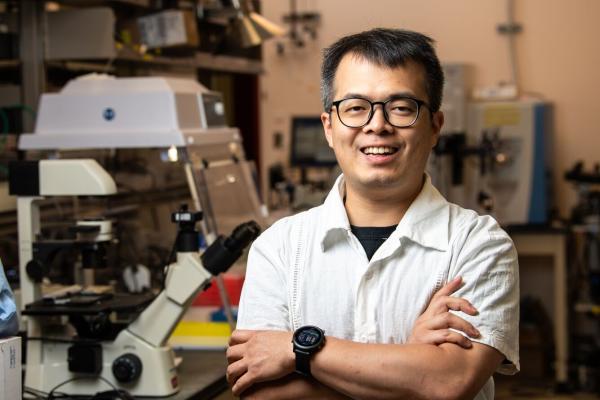
What is your research area?
My research area is proteomics, or the study of protein relations. My project now involves processing proteomics sample preparation on the Nanodroplet Processing in One Pot for Trace Samples (nanoPOTS). nanoPOTS is a microfluidic sample preparation platform designed for proteomics profiling of limited biological samples as small as single cells.
Why did you want to become a scientist?
Science was one of my favorite subjects in high school, and I think I always wanted to be a scientist. Most of my classmates became engineers because that was a hot topic at my school in Taiwan. And maybe at the time I thought about being an engineer, but ultimately, I chose to become a scientist.
What big challenge do you hope to tackle during your career?
Because the samples we use feature such a small amount of cells and tissues, and being that we try to minimize everything, we need to optimize all conditions to get the most amount of protein we can from the very small amount of cells and tissues. I aim to be a part of improving those conditions to maximize the preparation and processing of samples.
How did you come to EMSL/discover EMSL as a postdoc option?
I earned my PhD in Taiwan, and after graduating, I saw the position opening here and I applied. Some of my friends worked here, so they told me that there was a position opening.
What university did you join us from?
I earned my bachelor’s degree from the National Tsing Hua University and my master’s degree from the National Chi Nan University in Taiwan. I earned my PhD from the National Taiwan University, also in Taiwan.
What do you enjoy doing in your free time?
I like to go camping with my friends and sometimes we go hiking. We have lots of outdoor activities here.

